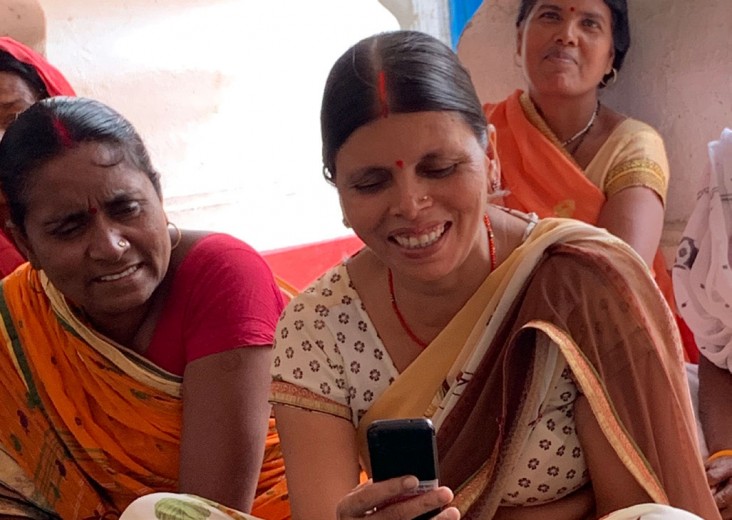- What We Do
- Agriculture and Food Security
- Democracy, Human Rights and Governance
- Economic Growth and Trade
- Education
- Environment and Global Climate Change
- Gender Equality and Women's Empowerment
- Global Health
- Humanitarian Assistance
- Transformation at USAID
- Water and Sanitation
- Working in Crises and Conflict
- U.S. Global Development Lab
Speeches Shim

In India, there are currently significant gender gaps in the adoption and use of mobile technology: 59 percent of women own a mobile phone – compared to 80 percent of men – and women are less than half as likely to use mobile Internet or own a smartphone. Past research points to social norms as playing an important role: many families see phones as an unwelcome distraction that exposes women to ideas and individuals that may threaten their purity and traditional role as caregiver.
In this project, EPoD India is providing in-person training and IVR-based information about government programs and benefits to very poor rural women around Raipur, Chhattisgarh, in communities where caste and mobility make it difficult for women to access important government services. EPoD’s program, Mor Awaaz, is leveraging a government-led two million mobile phone give away to rural women to make women’s use of phones more socially acceptable in communities where their access and ability to own phones are often limited. EPoD is assessing what kinds of acceptable use cases exist - or can be created - to catalyze women’s use of phones, as many women do not think technology is applicable to their lives.
To date, nearly 11,000 women from 180 villages have completed digital literacy training and enrolled in the Mor Awaaz service. Through a rigorous randomized control trial, EPoD is determining which training packages, information, and incentives are most effective and will lead to the highest retention of knowledge and phones. In addition to evaluating program effects on women’s social and economic opportunities, EPOD is also evaluating the program’s intermediate impacts on mobile access, specifically by measuring the gender of respondents that pick up posttraining Mor Awaaz calls. EPoD is also experimenting with a machine-learning algorithm that detects female or male voices to collect anecdotal data on gender-based phone dynamics within the household. This project has great potential for scalability as it aims to answer, with a high level of accuracy, what package of services is most effective at supporting norms that lead to greater and freer digital access for women in India.

Comment
Make a general inquiry or suggest an improvement.